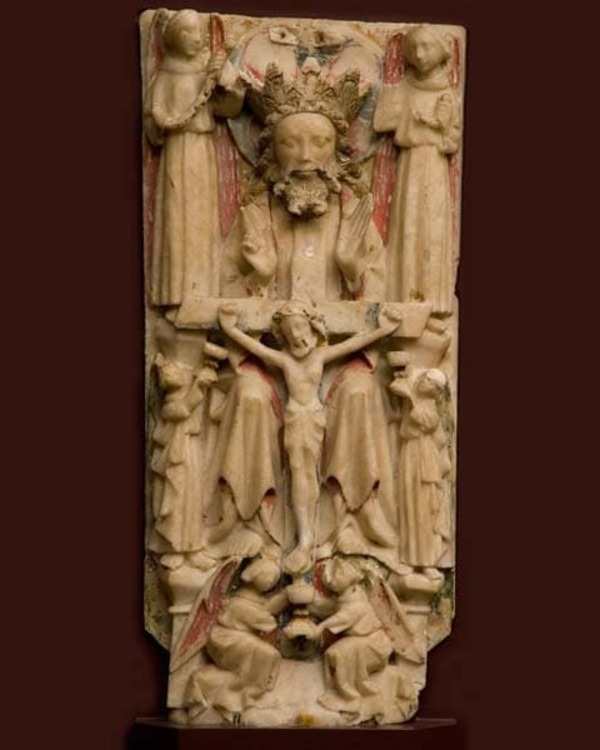The Trinity
‘The Trinity’ is a late 15th-century British sculpture that includes the crucifixion of Christ as a fundamental part of the concept of a triune God. The sculpture is made of alabaster and is uniformly tan with remnants of both red and blue paint still present in the deeper grooves of the sculpture. It measures at 22 1/2 x 10 3/8 x 2 1/8 inches. The artist is unknown.
Christ is displayed at the center of the sculpture at his crucifixion, with the traditional single post and single cross piece. In order to emphasize Christ’s divinity, the artist depicts Christ emotionless and pain-free. Rather, He appears at peace while being surrounded by God the Father and the Holy Spirit. The proportions of Christ’s body seem distorted, with the head, feet, and hands being enlarged in comparison to the rest of the body.
Although God the Father appears enthroned and as the largest figure in the piece, He appears behind Christ Himself. The three holy entities are aligned along the central axis of the sculpture. The dove of the Holy Spirit originally appeared at the very tip of the sculpture, but it unfortunately broke off.
Three different sets of angels appear surrounding the Trinity, each holding instruments of the passion. The pair at the top, which stand above God’s crown, are holding chains, perhaps representing man’s enslavement and subjugation to earthly desires and possessions. This depiction reminds the viewer of Christ’s sacrifice for earthly beings. The second pair of angels, who stand below the cross piece, hold up chalices to Christ. A chalice is an important object in the Gospels as it is the vessel that was used by Jesus at the last supper to serve wine. The last set of angels are sitting below Christ. They are holding a chalice together below Christ’s feet, perhaps collecting his blood from the crucifixion.
This sculpture was purchased with funds provided by Mr. and Mrs. Robert Raclin and is currently inaccessible in preparation for the move to the new Raclin Murphy Museum of Art.
